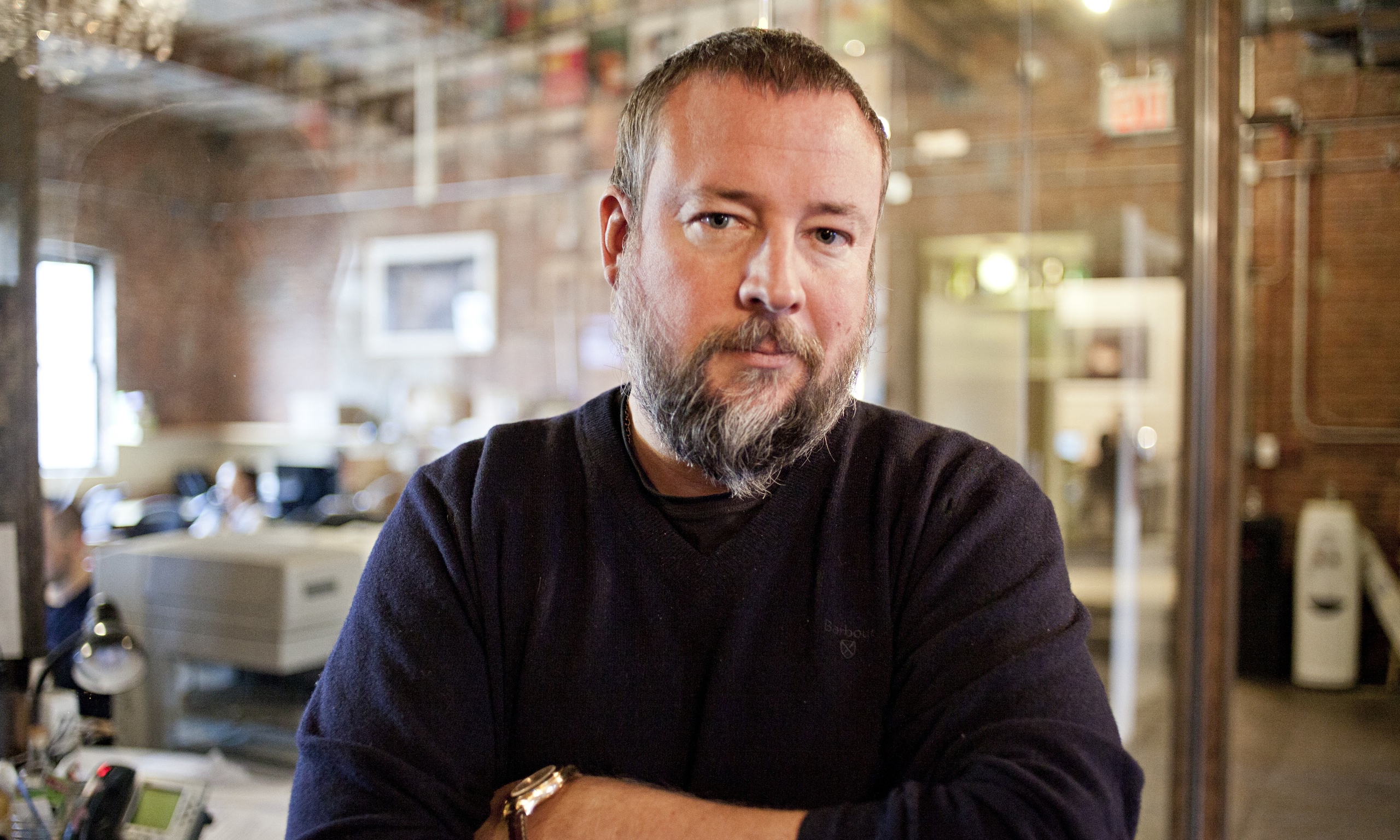Telling the Story and Being Part of the Fight
Vice News, the Recipient of the Press Club’s Public Service Award, Does Things Its Own Way, and Gets Results
BY LUCAS SHAW
Shane Smith hosts a regular news show, but he has no illusions of being the next Walter Cronkite. Instead, he’s trying to create a new type of newscast, one that forgoes the longstanding tradition of dispassionate, objective reporting and replaces it with a more active style of service journalism.
It’s a unique body of work that led the Los Angeles Press Club to honor Smith and Vice with this year’s Public Service Award, bestowed annually for contributions to civic life.
Smith, a New Yorker by way of Ottawa, is the co-founder and CEO of Vice Media, a company that began as an alternative magazine in 1994 called Voice of Montreal. It soon morphed into Vice, a free magazine specializing in humorous writing and cultural criticism with a distinctly anti-authoritarian flair.
Over the past two decades, as Smith and his team pushed into journalism, Vice has transformed yet again, becoming a multi-platform global news outlet that produces thousands of hours of video for its websites, YouTube, Snapchat, HBO and TV networks in Europe and Canada. Soon Vice will have its own U.S. TV channel.
The company has never abandoned the prurient and sensational. Recent shows on its website include stories about man boobs, famous stoners, and taco and burrito emojis.
But there’s a serious side that sets Vice apart. With thousands of contributors around the world and bureaus in more than 30 countries, the company sends reporters to some of the most dangerous war zones. Its troops interview dictators and cover stories neglected by many other news outlets.It’s unconventional, yes, but it’s finding an audience. It’s also finding people who believe in its future—Vice’s popularity among younger viewers has convinced investors it is worth more than $2 billion.
“We’re not coming at it from a straight journalistic point of view, we actually go to a place and press record,” Smith said in a March interview. “We see how the story takes us. If the story takes us into a different place, then we follow that. We have young people filming, picking stories and continuing to give us that freedom.”
Vice has had a reporter stationed in Russia and the Ukraine since 2014, filing more than 100 dispatches. He continued his job even after he was kidnapped.
The company secured footage from within North Korea by bringing along basketball player Dennis Rodman, and embedded a reporter with the Islamic State militant group. The latter piece was cited by almost every major news outlet, and earned Vice a 2014 Peabody Award, one of two it received.
That is as many as CNN won last year. The comparison is fitting, as Vice partnered with the cable news giant in January 2010, an alliance surprising enough that the late New York Times media critic David Carr famously asked Smith, “What the fuck is going on that you’re doing business with CNN?”
Carr, who died in February, grew to embrace Vice over time, and praised its piece on the Islamic State for demonstrating “extraordinary access and footage.”
“In a world that is hostile to journalism in all its forms, where dangerous conflicts seem to jump off every other day, you can’t be uppity about where your news comes from,” Carr wrote in August 2014. “I’m just glad that someone’s willing to do the important work of bearing witness, the kind that can get you killed if something goes wrong.”
Vice’s piece on the Islamic State also attracted the interest of Richard Plepler, the chief executive officer of HBO. Vice already produced a weekly newsmagazine for the network featuring reports on the American military industrial complex, the conflict in Syria and climate change.
Plepler wanted more, and will now pay Vice to produce a daily newscast and a number of specials for HBO, exploring everything from revolutionary cancer treatments to transsexuals in Iran.
The special “Killing Cancer” signals Vice’s ambition to combine journalism with service. In addition to shining a light on a potential cure for the disease, the company worked with the Mayo Clinic on a fundraising campaign. It pulled in more than $2 million, including a $1 million matching gift from Smith.
“Going forward Vice will not only remain committed to this type of story but also helping wherever we can,” Smith said in May.
This year, Vice began dedicating weeks to specific subjects such as mental health. It also investigated the lives of detainees at Guantanamo Bay in a project that featured essays, poems, drawings and satire written by some of those held captive at the prison.
All of these stories had in common the same edgy editorial voice that defines the brand. Vice is not a bystander. It is part of the fight.
Smith took that fight on in Vice magazine’s first environmental issue, writing, “Because there are entities out there, Big Oil, petrochemical companies, etc., actively spending billions of dollars on media to obfuscate the truth, we have to fight that, and that’s what this issue is. Vice is committed to this battle, and we are putting our editorial where our mouth is.”
Smith’s ambitions continue to grow. He has broadened Vice Media by creating a number of distinct brands, including Motherboard, which reports on technology, and Noisey, which covers music. In December, the company partnered with the Knight Foundation to invest $500,000 to train reporters at City University of New York’s Graduate School of Journalism to adopt new ways of storytelling.
The imprimatur of CNN and HBO has helped Vice News earn the trust of major advertisers, media critics and viewers, while maintaining its reputation as a youthful, transgressive media company.




